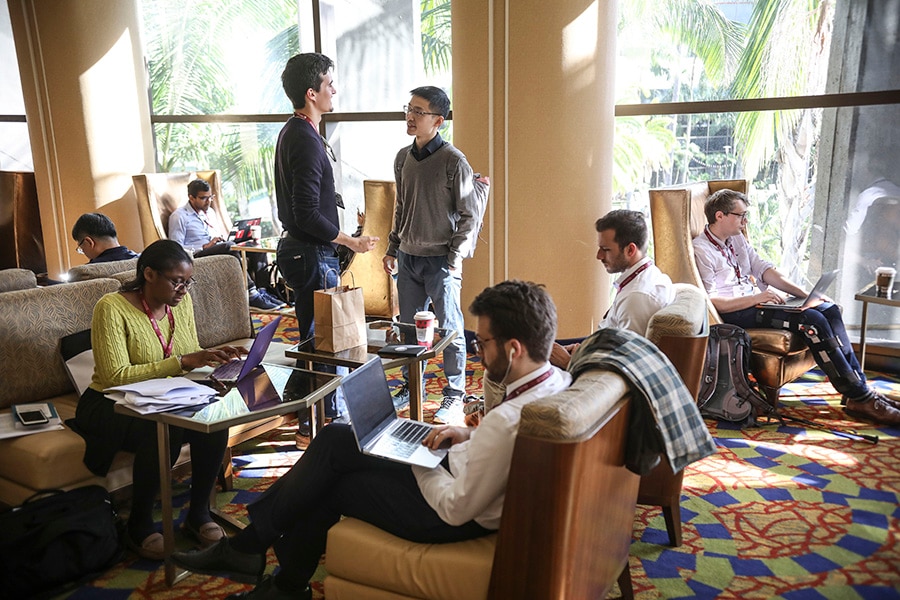
For women in economics, the hostility is out in the open
Gender and racial gaps in economics are wider, and have narrowed less over time, than in many other fields
 Attendees mingle at an American Economic Association conference in San Diego on Jan. 3, 2020. New research details how men and women are treated differently when they make economic presentations. Image: Sandy Huffaker/The New York Times
Attendees mingle at an American Economic Association conference in San Diego on Jan. 3, 2020. New research details how men and women are treated differently when they make economic presentations. Image: Sandy Huffaker/The New York Times
A few years ago, economists Alicia Sasser Modestino and Justin Wolfers sat at the back of a professional conference and watched Rebecca Diamond, a rising star in their field, present her latest research on inequality. Or at least she was meant to present it — moments after she began her talk, the audience began peppering her with questions.
“She must have gotten 15 questions in the first five minutes, including, ‘Are you going to show us the data?’” Modestino recalled. It was an odd, even demeaning question — the session was in the data-heavy field of applied microeconomics. Of course she was going to show her data.
Later that morning, Modestino and Wolfers watched as another prominent economist, Arindrajit Dube, presented a paper on the minimum wage. But while that was one of the most hotly debated topics in the field, the audience allowed Dube to lay out his findings for several minutes with few interruptions.
Over a drink later, Modestino and Wolfers wondered: Had the audiences treated the two presenters differently because of their genders?
They couldn’t be sure. Maybe the audience treated Dube differently because he was more senior. Maybe they had simply found his paper more convincing, or less interesting. Maybe the observations of Modestino and Wolfers were a result of their own biases — Dube, in an email, recalled getting lots of questions, some of them quite skeptical. (He added that he didn’t know how his reception compared with Diamond’s, and he said he didn’t challenge Modestino’s recollection overall.)
©2019 New York Times News Service




